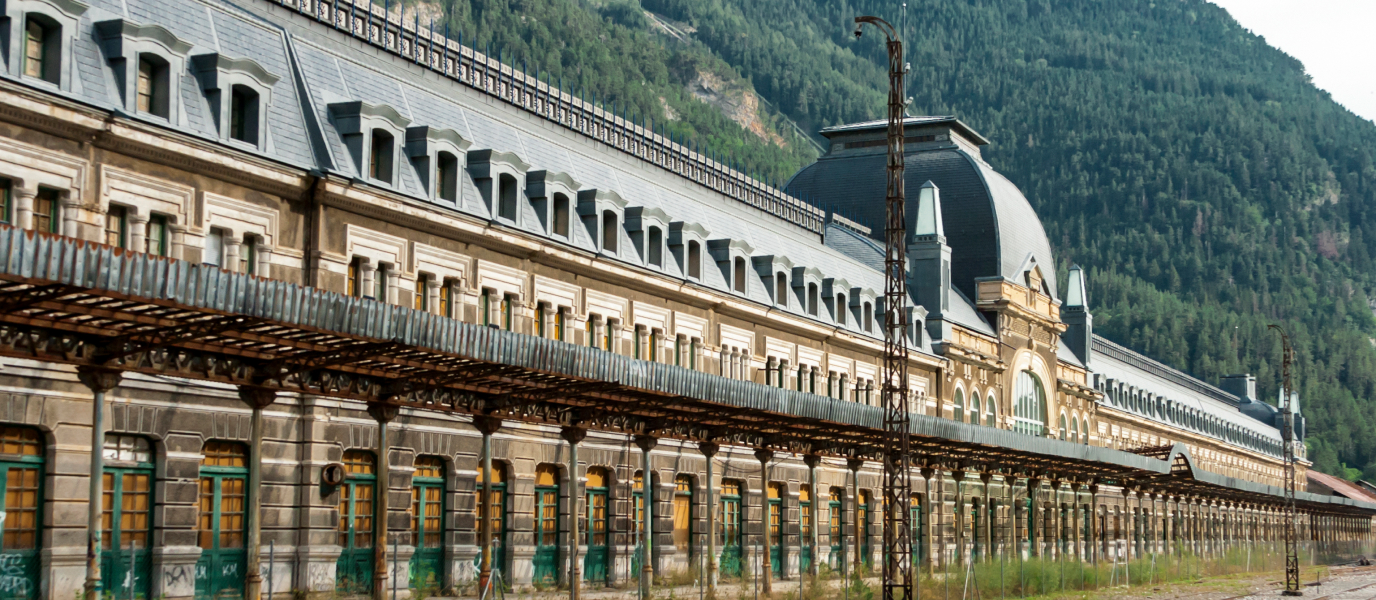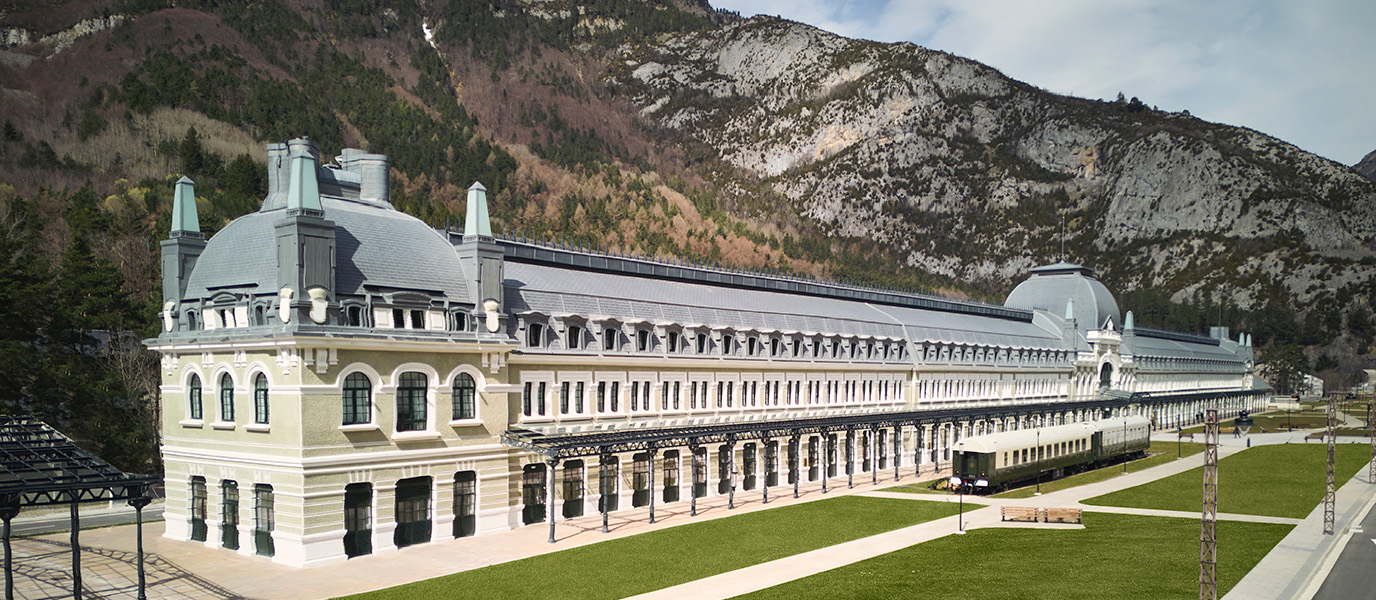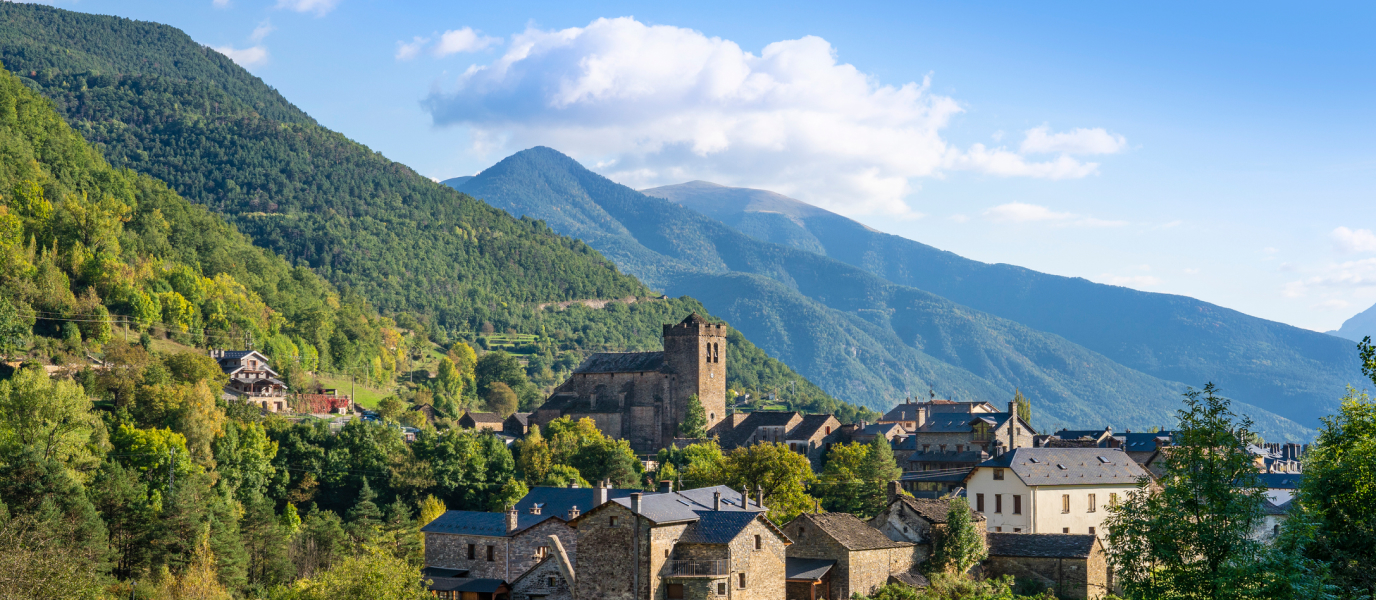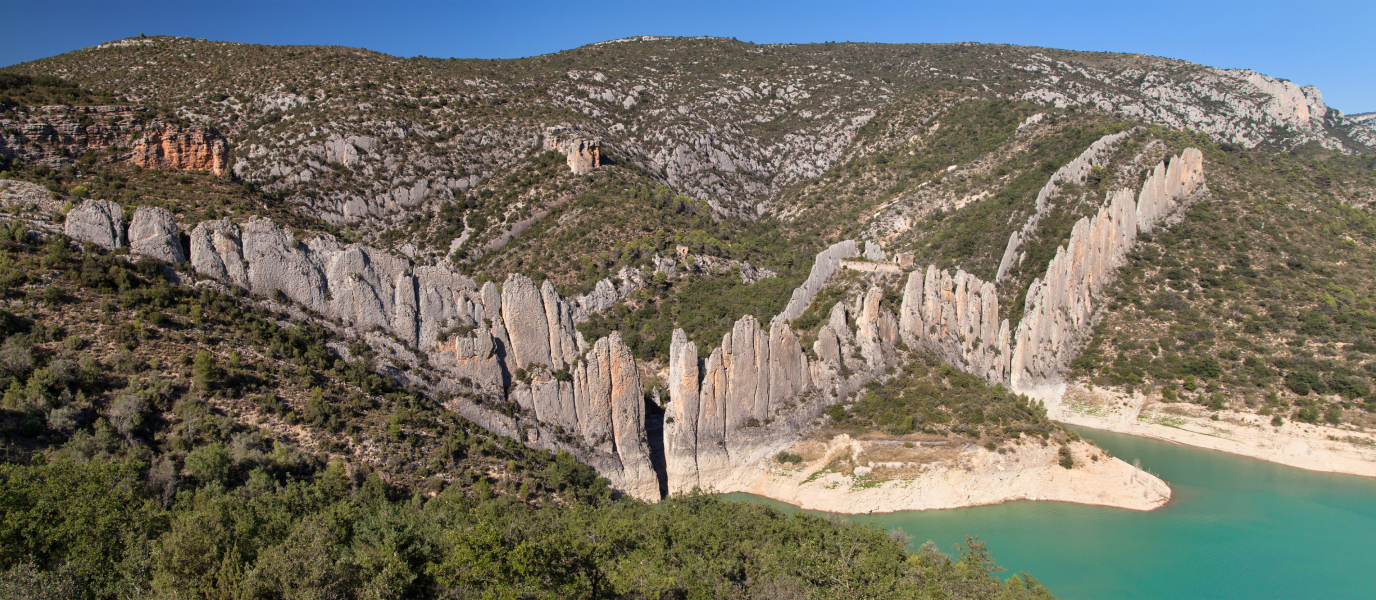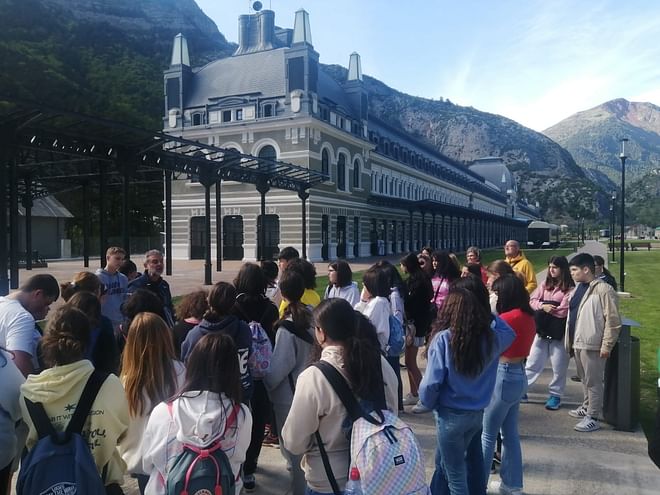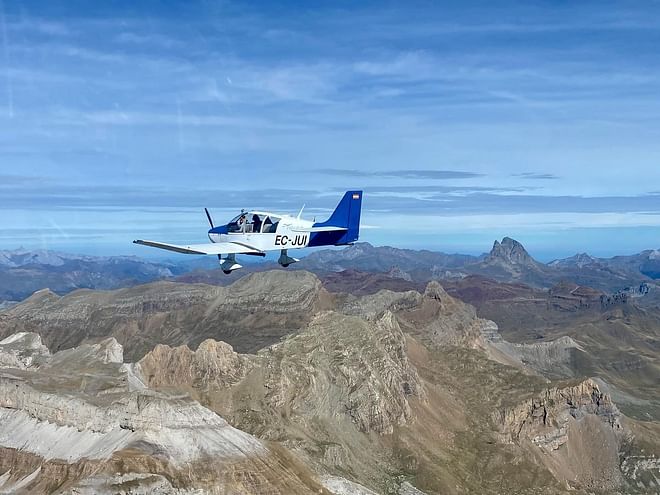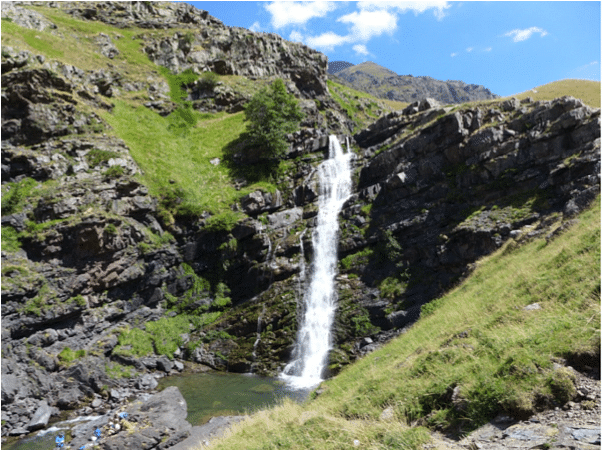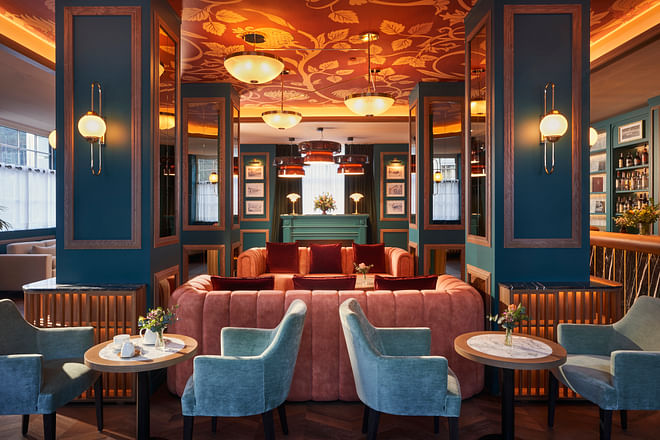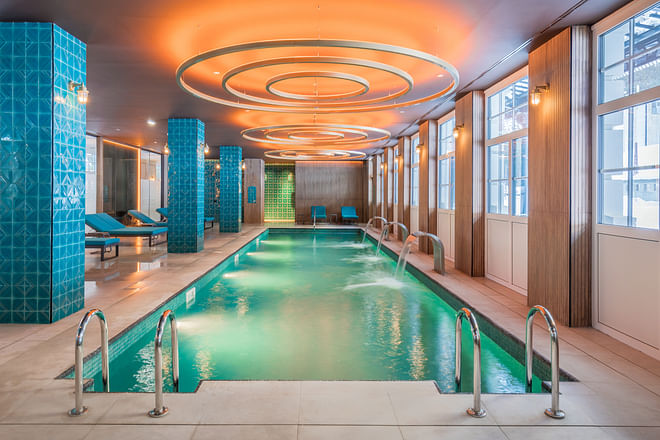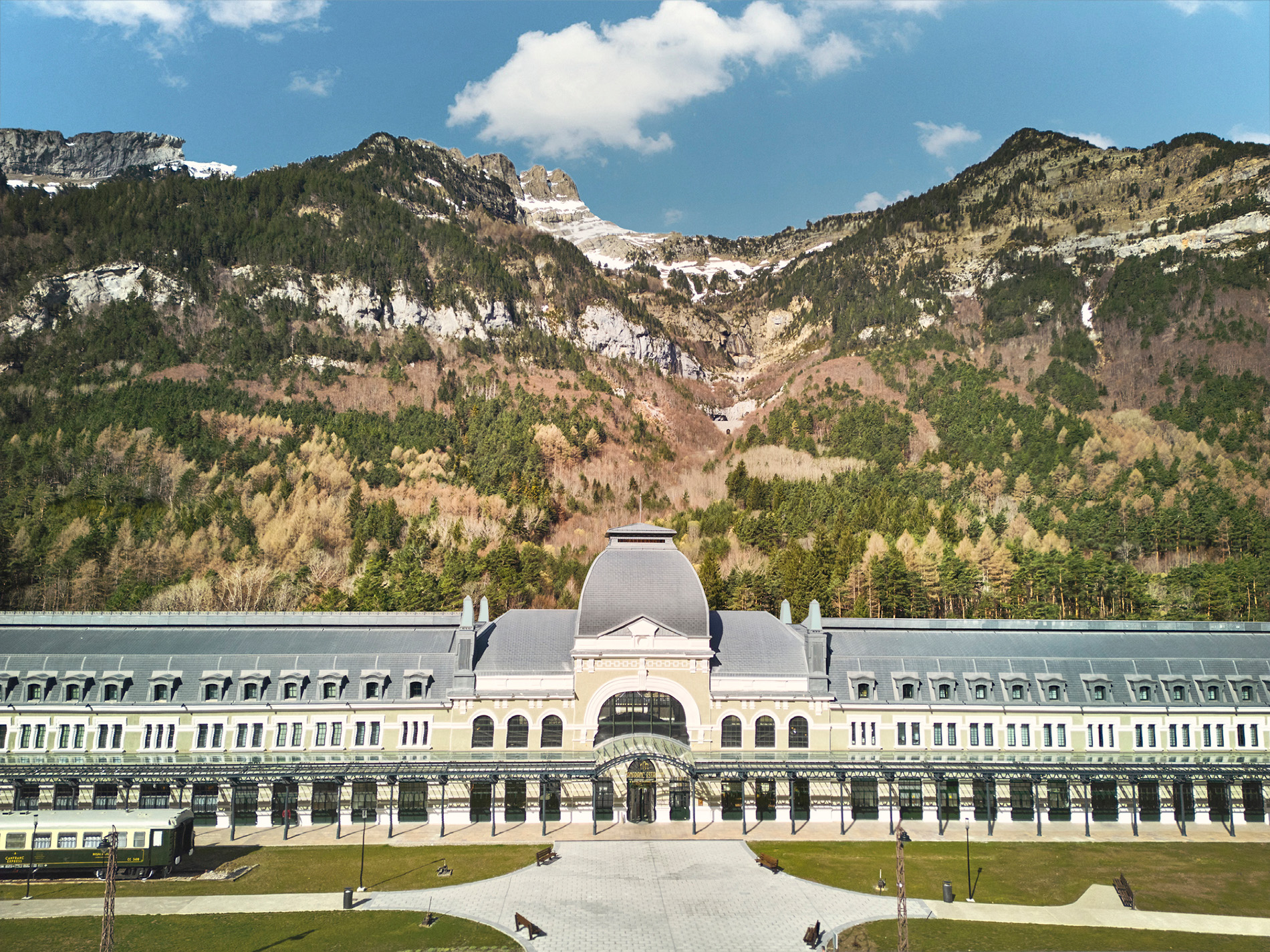Canfranc is perhaps the most beautiful train station in Spain. It is an impressive building, surrounded by mountains, on a esplanade bordering France. It has a legacy by way of the stories and voices which remained silent for decades. Next stop: Canfranc.
Train stations are very often the best witnesses to history. They have seen magnificent moments, sad departures, joy and farewells, trains loaded with goods and people right at the border of two countries which have sometimes been united and other times at loggerheads.
The Canfranc station embodies all of this. It is a building which speaks for itself, due to its size. When you look at it, it has an aura of mystery in tandem with the legend. If you are touring the Pyrenees of Huesca or if you are visiting Jaca, don´t miss Canfranc.
History of the Canfranc station
The international station of Canfranc is closely related to the rail link between Spain and France. The Somport border tunnel linked the two countries of the Pyrenees. This brought new possibilities for moving passengers and goods.
The idea behind this project first arose in 1853, in a call for the construction of a line from Madrid-Paris via the Aragonese Pyrenees. Eleven years afterwards, the first studies began. It was recommended that the line should pass through Saragossa and the French town of Pau.
Works on the Somport tunnel (a crucial section of the project) were carried out between 1908 and 1912. However, it was not until 1928 when Canfranc station was inaugurated, with the king Alfonso XIII and the French president Gaston Doumergue presiding.
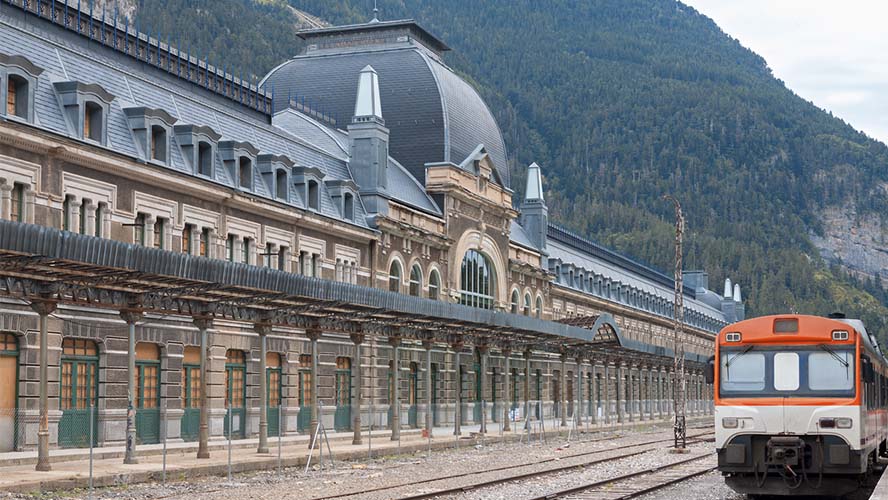
Nazi gold in exchange for Galician wolfram in Canfranc
In the Spanish Civil War, the nationalists closed the Somport tunnel to prevent any raids from France. However, some of the best stories about the station happened during the Second World War.
As the French side was controlled by the Nazi army, in Canfranc there were trains used to carry Galician wolfram to the tank factories in Germany. Franco repaid the help Hitler gave him during the Spanish Civil War. In the inverse situation, trains laden with gold entered Spain originating from Germany. Most Nazi gold would keep moving until reaching Portugal. The customs at Canfranc was under the control of the SS and the Gestapo.
After the war, the Canfranc station would never regain its former glory. Activity at what was then the second largest station in Europe would decline and grind to a halt. This occurred with the end of the international link between Spain and France at Canfranc, caused by the collapse of the L’Estanguet bridge in 1970 on the French side in suspicious circumstances.
An international station
The main feature of the Canfranc station is its international nature. As tracks in Spain have a different gauge (the Iberian gauge is1668 millimetres as opposed to 1435 for the European gauge), this meant there had to be two marshalling yards, one for each side of the building, with their respective duplicated platforms, entrances, and internal services for the station.
Both the passengers and the goods had to change from one side to the other if they wished to continue their journey between both countries. However, the building also provided the same services on both sides in order to service each country. There were ticket boxes, exchange bureaus, customs, police stations, post offices and hotels… amongst other services.
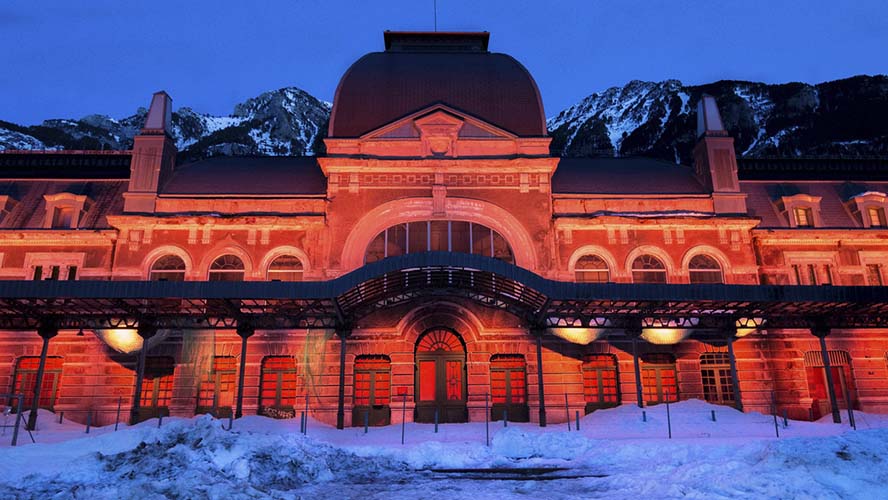
This explains the impressive size of the Canfranc station: 241 metres long, 12 metres wide, 365 windows (one for every day in the year), with 75 doors on either side. The longwise view of this enormous building is impressive, an authentic rail border on Spanish soil.
On first sight, the Canfranc station is reminiscent of the style so frequently used in French stations. This can also be seen in buildings such as the current Museé d´Orsay (The Orsay Museum) in Paris with a slate roof, dormer windows, art-deco pinnacles and a large central dome. The building is long and narrow to provide space for the two marshalling yards that must be accommodated on both sides.
Visits to the Canfranc station
Despite being abandoned for decades, the Canfranc station has always been a great attraction for tourists and railway enthusiasts. On being restored for future hotel projects, the area has been revitalised. This has raised interest in finding out about the past behind this magical building.
Guided tours of the station
The Canfranc Council organises guided tours of the train station. Given the limited capacity and the high demand for tours, tickets must be booked through the Council website. It is not possible to visit the building on your own.
The guided tour of the Canfranc station lasts around 40 minutes and are given both in Spanish and French. After explaining the history of the station, the tour goes from the concourse to the underpass.
What to see in the town of Canfranc
The project for linking a railway between Spain and France through Somport went in tandem with the construction of a new settlement centred on the future station of Canfranc in Los Arañones. This is what is known today as Canfranc-Station, which is four kilometres north of the original town of Canfranc.
So, here there are homes, hotels and other types of buildings surrounding the old station today and which are part of the industrial activity linked to the border crossing.
Apart from giving an insight into the special nature of railway life, Canfranc and Canfranc town harbour some interesting elements of historical heritage. These are partly linked to the strategic position it has had throughout history. For example, there is the beautiful Fusilier Armoured Lookout Tower (nineteenth century) which may have contained a contingent of 25 men who guarded access to the Aragon Valley.
Also, there are the different bunkers related to the Second World War, whose aim was to guard against a possible invasion from France. These military constructions may be toured by following the so-called Bunkers Trail.
However, without doubt, Canfranc is the entrance point to one of the most popular skiing spots in the Pyrenees. Here, there are the ski stations of Astún and Candanchú (internal link) located a few kilometres away. Many skiers settle in Canfranc to go up to these two ski centres, each of which have 50 kilometres of slopes.
Moreover, France is on the other side. With the old railway tunnel closed, the modern tunnel of Somport provides a swift, dynamic road connection with neighbouring France.
A stroll through the historic center
It is worth walking calmly through the heart of the town of Canfranc. It is located on the Camino de Santiago and was born in the XI century in a valley with few agricultural resources, which forced its inhabitants to devote themselves to trade and the reception of pilgrims and travelers. Be sure to visit the remains of the church of La Trinidad, from the 16th century; the house-tower of the infanzón Aznar Palacín, from the 14th century; the church of La Asunción, located next to the bed of the Aragón river; the pilgrims’ bridge, built in stone in the 16th century, and what remains of the castle.
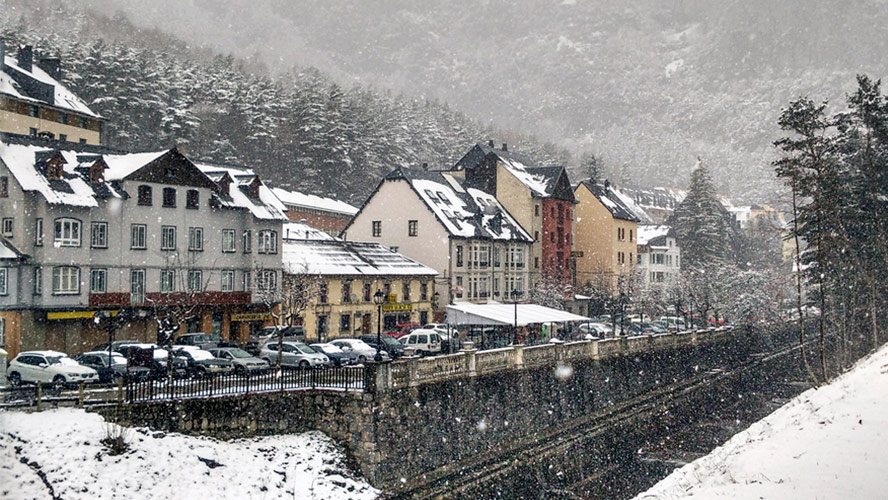
Route of the bunkers
This curious and interesting itinerary covers a series of bunkers whose construction was intended to defend the population from a possible military invasion from France that never took place. They are military constructions built between 1944 and 1959. During that time, hundreds of bunkers were built throughout the Pyrenees, from the Bay of Biscay to the Mediterranean. Some say that there are a total of 4,000 fortified settlements. Known as “P Line” or “Pyrenees Line”, it is possibly the largest fortification work built in Europe after World War II.
Riflemen’s Turret
Built in 1876, this curious fortification was built after the completion of the road linking Zaragoza with France through the Somport. The aim was to defend this important communication route with a large rifle turret that could hold up to a contingent of 25 men. The building was equipped with a room for the officer, another for the infirmary, a dungeon and a woodshed. The Torreta de Fusileros has a curious elliptical floor plan, a perimeter moat that was crossed by a drawbridge, and four floors around a large central courtyard.
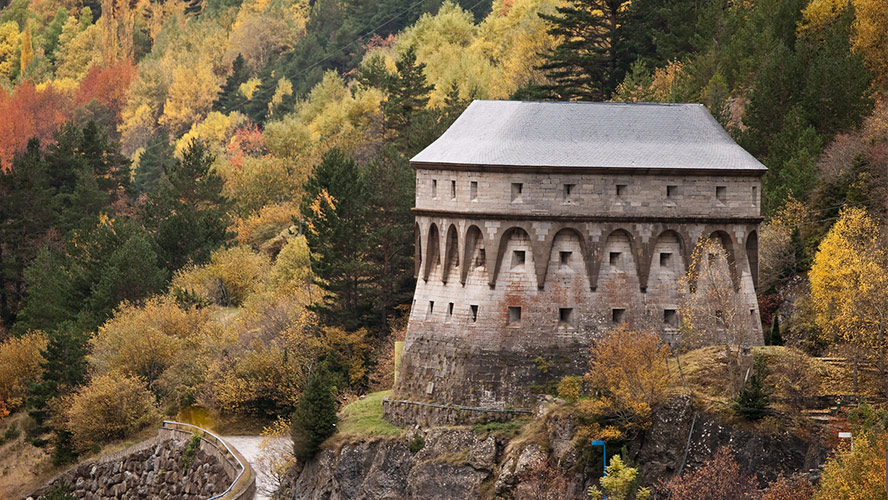
Where to eat in Canfranc
The typical gastronomy of Canfranc is based on natural products that are the basis of its excellent traditional recipes. Its meat and game products are famous, as well as the wines of Somontano. If you have the chance, try the mountain asparagus, the empanada goguera, the chiretas, the empanadico or the boliches de Embún. And for dessert, the Ayerbe cake or the coc de Fraga. There are many good restaurants in Canfranc. Here we suggest just a few:
Laduanilla Canfranc. With a traditional and very neat decoration, this is a small but very cozy restaurant that, when the weather is nice, has a nice terrace. Don’t miss the mushroom croquettes, the salad with fried egg and the boletus scrambled eggs.
Borda l’Anglassé. Its menu has numerous dishes of typical Aragonese cuisine. There is something for everyone: tapas, grilled, creative food, vegan, celiac, a la carte, menu … Everything is in sight and you will surely have doubts when choosing. Everything looks very tempting. You can choose from a low temperature Iberian pork cheek to a millet burger with cheddar cheese cream and caramelized onion.
La Brasa Asador. In this restaurant the specialty is meat, but it has many other options and all of them are homemade. The quality-price ratio is very interesting. It also has a daily menu where you can choose the dish of your choice. Here the portions are generous and everything is good: the calamari, the green beans…




































































